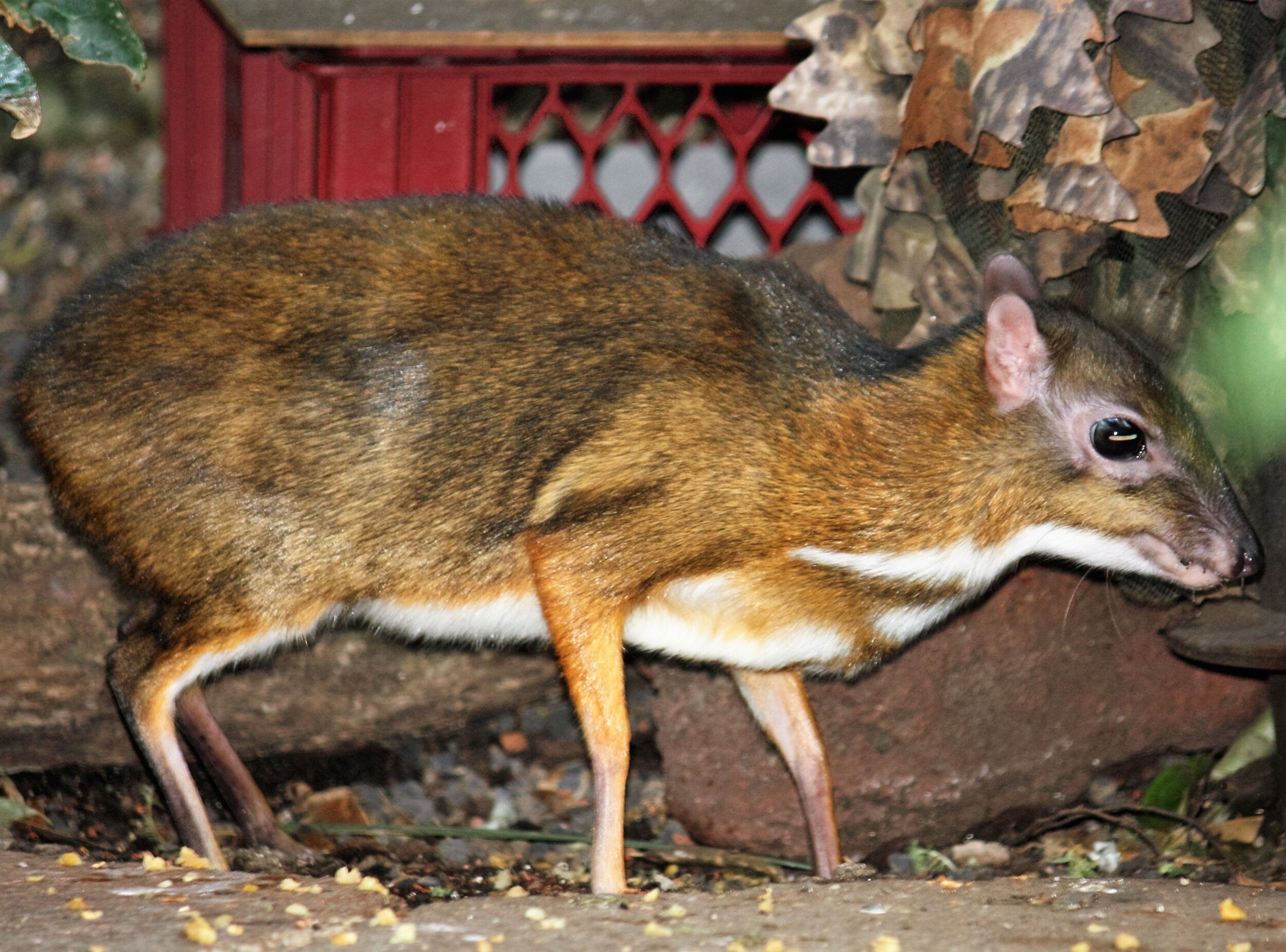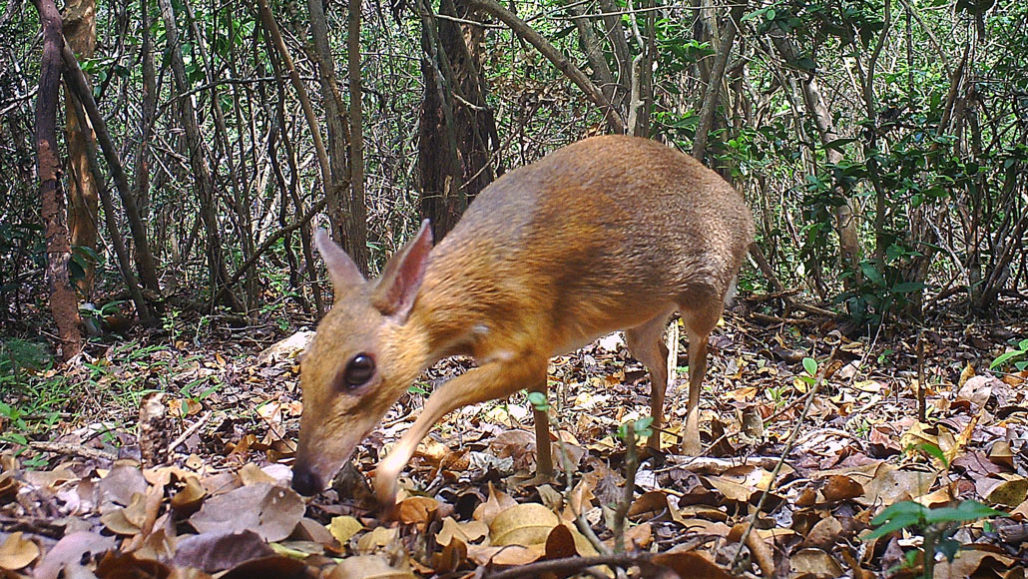In the digital age of globalization, Google, and infinite access to information, it might pass someone by that there’s still plenty on this earth to discover. For instance, in a time when organizations like the IUCN and the WWF conclude that we are living through the 6th great extinction event, there are still some animals that have not only avoided extinction but are reappearing after being lost for years.
A team of researchers in South Vietnam has produced evidence that the silver-backed chevrotain, also known as the Vietnamese mouse deer, or further still the fanged-mouse deer, is still going about its business in the dry lowland forests of Vietnam.
The Greater Annamites Region of Laos and Vietnam is home to one of the highest concentrations of endemic mammals anywhere in a continental setting, especially ungulates.
Ungulates are hoofed animals that eat grasses which they ferment in separate stomach compartments. Cows, sheep, camels, the deer family (elk, moose), antelope, and more are ungulates. But while there are stories of people driving WV Beetles underneath a bull moose, the silver-backed chevrotain is no bigger than a hare.

Lost to science
The last scientifically-confirmed sighting of the diminutive deer species was in 1990 when a hunter shot one and donated its body to science. Before then, the only other specimens ever collected date back to 1910 where a few individuals were found in the drier southern area around the city of Nha Trang.
No camera traps have ever caught a glimpse of the Vietnamese mouse deer in the steamy tropical jungles in the north, but starting with a simple verbal survey of locals in Nha Trang, the researchers from the Global Wildlife Conservation in Austin TX, and the Leibniz School for Zoo and Wildlife Research in Berlin, found that out of 35 individuals, 6 confirmed the existence of 2 types of chevrotain distinguished from each other by coloration.
In November 2017, the researchers set up 3 camera traps in areas they felt were ripe for sightings of the silver-backed chevrotain. In July 2018 when the cameras were retrieved, an astonishing 1,881 images of tiny deer had been captured over the course of 208 separate encounters.
The animal was confirmed in every single image as the silver-backed chevrotain — lost to science for almost 30 years – by the animal’s rust-colored fur and the silver-grey patch of color on the rump. An antlerless deer, the so-called fanged-mouse deer grows long canine-like fangs on its upper jaw instead, some of which can grow so long as to reach below the animal’s chin.
Spring to action
Spring-loaded and passive wire snares are driving various species of forest floor-dwelling mammals towards extinction. The saola (Pseudoryx nghetinhensis) also known as the “Asian unicorn,” and the large-antlered muntjac (Muntiacus vuquangensis) are other endangered ungulates like the silver-backed chevrotain that live in the Greater Annamites Region.
The findings, while very positive and certainly surprising, are also inconclusive, since the scientists could not determine how many of the 208 chevrotain encounters were repeat visitors.
The corresponding paper written with the data from the camera traps recommends immediate action, first to survey the status of the existing population in South Vietnam, what their numbers are like, and whether there are other isolated populations nearby or elsewhere in Southeast Asia.
Next is to examine the major threats faced by the fanged-mouse deer; en-masse snaring, habitat loss, and other forms of poaching for the bushmeat trade of Southeast Asia. It is for the collection of all this data that the scientists recommend intensive camera trapping across all of the dry southern forests and also into other areas of Vietnam as well.
It’s not every day that we have the opportunity for a second chance at saving a species, and the evidence provided by the cunningly placed camera traps offer hope for scientists at the Vietnam Academy of Science and Technology, Ho Chi Minh City, who participated in the study to raise awareness about the dangers of snaring, and that the animals of Vietnam are resilient, fascinating, and deserving of protection. WaL



